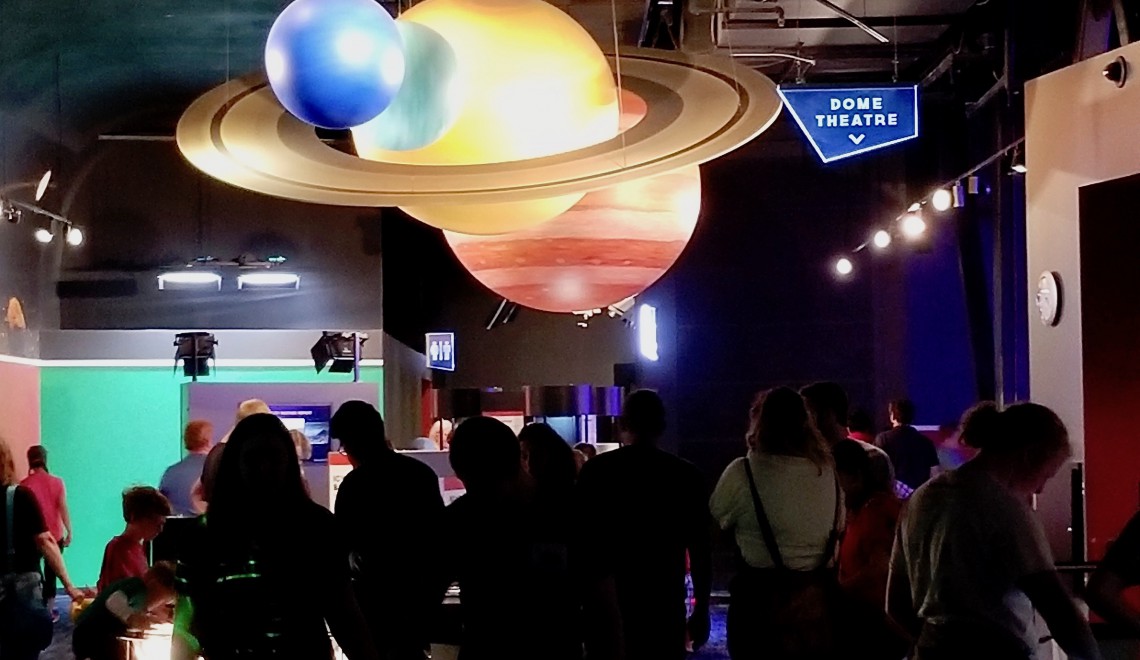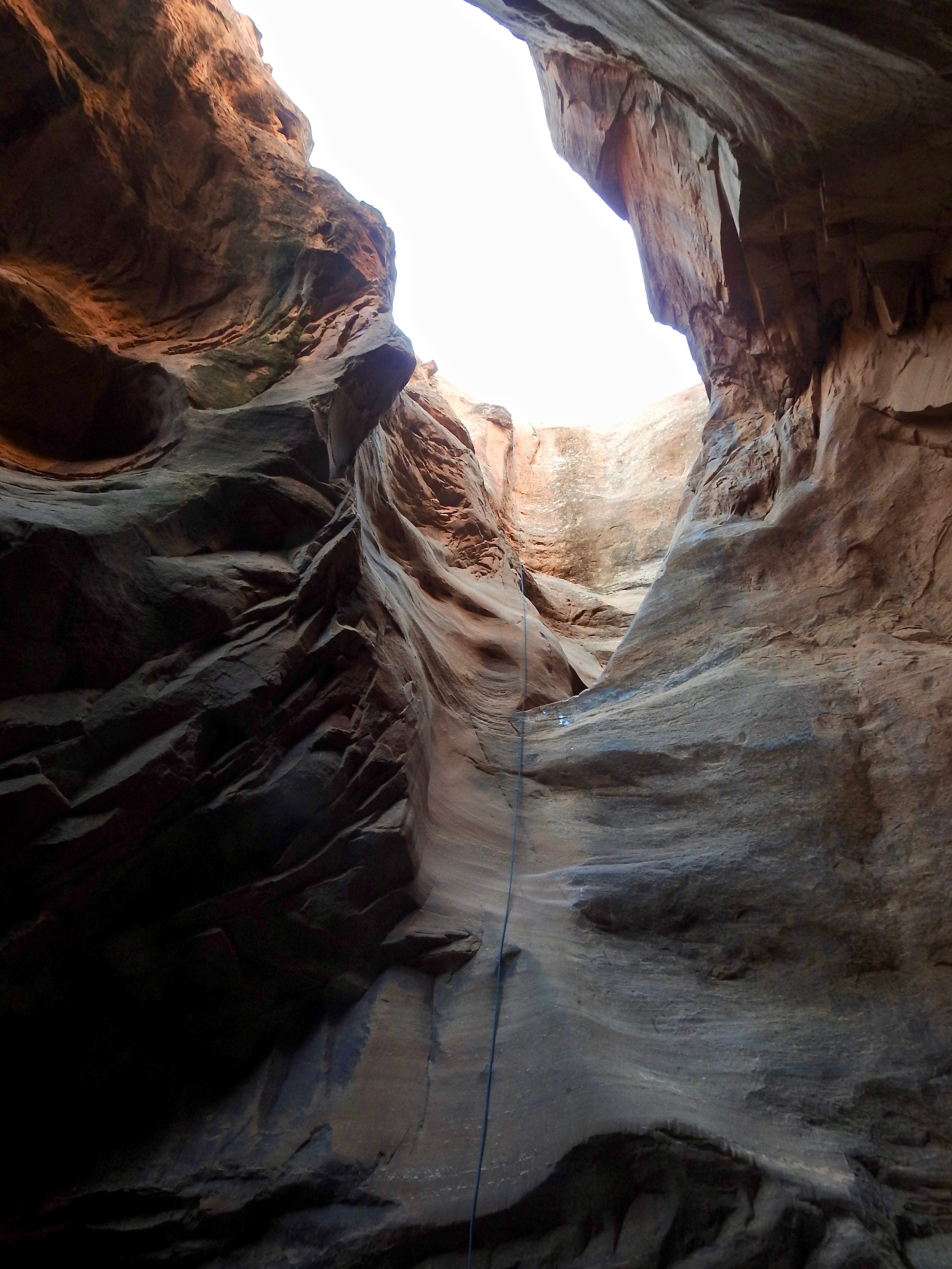
“Wilderness. The word itself is music.”
― Edward Abbey, Desert Solitaire
Arches National Park sits atop a 300 million year old underground salt bed. Over time, residue from floods covered the salt bed and was compressed into rock. The unstable salt layer buckled under the rock and thrust the rock layers upward while other layers fell into craters. There are 2,000 cataloged arches. To be an arch, it must have a minimum of a 3-foot opening.

Map of Arches National Park. The blue dotted lines are the trails we explored with Adrift Adventures.
Rock strata:
The rock formations are different colors and are in layers, like a layer cake. Layers vary in the order. Formations:
Top layer – Entrada layer: includes Moab tongue and slick rock
Next layer – Dewey Bridge
Bottom layer – Navajo sandstone
Millions of years ago, water in the rocks’ cracks froze and put pressure on the rock, breaking it into pieces. Wind swept away the loose particles, leaving fins. The fins are the beginning of arches. Weak parts of the fin fall away leaving the harder rock and eventually forming arches.
Pictographs and Petroglyphs:
Pictographs provide evidence of Native Americans for thousands of years from the Archaic peoples to the Puebloan, Fremont and Ute. Our ancestors lived and hunted Bison in the canyons near the Colorado and Green Rivers about 10,000 B.C. They left a story of their life on the canyon walls. These pictographs were discovered when the highway department was building Hwy 279 outside of Moab. Fortunately, they will be preserved and studied.

10,000 B.C. our ancestors chiseled their stories on the canyon walls. The carvings show Anthropomorphic (human) and Zoomorphic (animal) carvings.
When Brigham Young was searching for a place to establish the Mormon community, he sent a expedition group to this area. The conditions were harsh and the Native American Indians killed many of the settlers. Finally, the location was abandoned. Other people came in search of minerals, such as gold (very little) and Uranium. Charlie Steen struck a rich vein and became a millionaire over night. However, at the end of his life, he became bankrupt and died poor. Ranchers came to the area to graze their cattle. Some of the ranches remain today; although, grazing is not allowed in the national park.
Soil:
Crypto biotic soil crust, merely referred to as Crypto. In town, you can buy a t-shirt that reads: “Don’t bust the crust.” This colonization of living organisms helps stabilize the soil and enables plant life to grow. Crypto is a web of fibers that bind the rock together and resists erosion. When hiking or biking through the area, leaving the Crypto undisturbed is critical for the preservation of the land.

Crypto, living organisms form a crust and prevent erosion of the soil and rock. Remember…Don’t Bust the Crust!
Vegetation and wild life:
Vegetation supports wildlife. For example, the Big Horned Sheep eat the Blackbush. They are the only animal that find it tasty.
Chipmunks and Prairie Dogs are plentiful as well as Jack-rabbits and mule deer.
When the Mormons came to the area, they discovered the Ephedra bush (known as Mormon Tea Bush) which they picked and made into a tea as a stimulant since they were not allowed to drink coffee. It has a bitter taste.
Back Country Exploring in a Jeep 4X4:
Bruce and I went on a Jeep 4X4 tour with Adrift Adventures. Our guide, Carly, was not only a great driver on the back country trails, but she was very knowledgeable about the history of the area. She explained the intricacies of the formations and people, such as
Alexander Ringhoffer, who explored the area. He named Klondike Bluff because he said the area can be colder than the Klondike.
Formations make shapes:
The rocks take unusual shapes and from the time of the early settlers. These names have been passed down through the generations.
One of my favorites is the Three Gossips, which looks like three women standing together, talking about the town news.
Moab Information Center:
While you’re walking around Main Street in Moab, drop-in to the Information Center or call, (435) 719-2299. Located at 25 E. Center Street. They have orientation films, exhibits, and publications. They are friendly, helpful and knowledgeable about all things regarding both Arches and Canyonlands parks.
Arches and Canyonlands National Parks offer a wide variety of activities from a leisurely float trip down the Colorado to Canyoneering (rappelling) off rocks. Mountain biking to White Water Rafting. Truly…something for everyone.
Next week: Canyonlands National Park.
About the Author:
In 2010, Annie Coburn created FAB Senior Travel, a blog for mature and adventurous travelers. Her blog features travel articles from contributors as well as her own travels. Annie has published five travel books targeting the greatest cities on earth: Walk Paris, Walk Beijing, Walk London, Walk NYC, and Ellie’s Grand Adventure. She recently spent seven-months living and traveling in South America.
You are invited to subscribe to FAB Senior Travel:
Website: http:// www.fabseniortravel.com















Another great story and pics on Fab Senior Travel. Annie is the best for sure. Great stories and travel advice from a Pro.